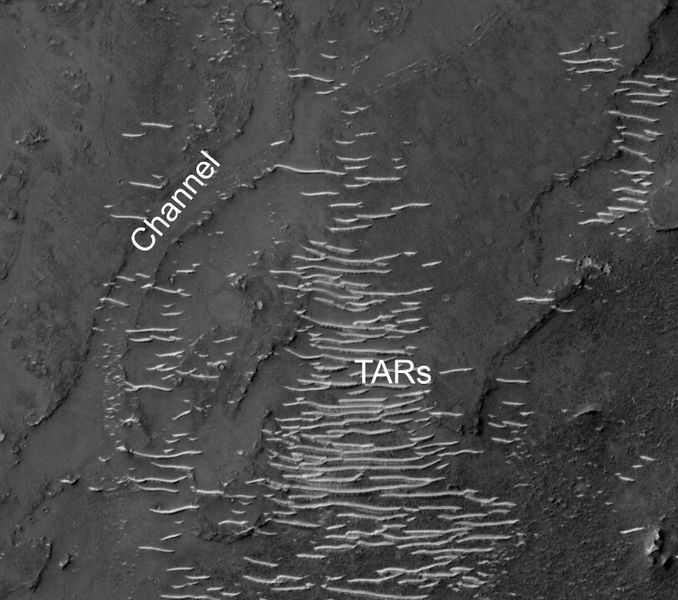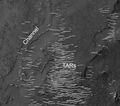File:ESP 042625 1655tars.jpg

Original file (1,506 × 1,332 pixels, file size: 763 KB, MIME type: image/jpeg)
Summary
Transverse aeolian ridges (TAR's) Transverse aeolian ridges—or TAR—are mysterious, wind-blown features that are intermediate in size between ripples and much larger sand dunes.
Ripples form from hopping sand grains, and dunes form from sand grains being blown over longer distances. One hypothesis for TAR formation is that larger grains like pebbles are rolled on top of smaller ripples; then, finer dust settles into the cracks, “inflating” the pebbles, making the TAR larger than typical ripples.
Source: https://static.uahirise.org/images/2015/details/cut/ESP_042625_1655.jpg
Image credit: NASA/JPL/University of Arizona/Secosky
Licensing
Public domain images are available for anybody to use without any licenses, royalties, or special permissions.
File history
Click on a date/time to view the file as it appeared at that time.
| Date/Time | Thumbnail | Dimensions | User | Comment | |
|---|---|---|---|---|---|
| current | 07:04, 17 April 2020 |  | 1,506 × 1,332 (763 KB) | Suitupandshowup (talk | contribs) | Transverse aeolian ridges (TAR's) Transverse aeolian ridges—or TAR—are mysterious, wind-blown features that are intermediate in size between ripples and much larger sand dunes. Ripples form from hopping sand grains, and dunes form from sand grains being blown over longer distances. One hypothesis for TAR formation is that larger grains like pebbles are rolled on top of smaller ripples; then, finer dust settles into the cracks, “inflating” the pebbles, making the TAR larger than typical rip... |
You cannot overwrite this file.
File usage
The following page uses this file:






